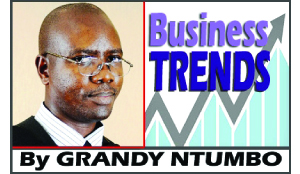 MANY business leaders attempt to create corporate cultures which enhance high performance but few have gone on record to succeed in this task.
MANY business leaders attempt to create corporate cultures which enhance high performance but few have gone on record to succeed in this task.
Understanding and resolving to put to work the nitty-gritties of creating high- performing corporate cultures seems to elude many business leaders.
Research shows us that there is an interpolated relationship between company performance and the levels of employee engagement.
However, employee engagement alone will not produce the desired results without a strategy-culture alignment.
To discuss this topic, further, I would like us to look at a case study of a local firm that appears to have considerably adjusted its competitive strategies but has not yet considered aligning their strategy with their corporate workforce culture.
We will also consider the outcome of my recent contact with a Sweden based firm, Barret Values Centre, Culture and Leadership Consultants, Tor Eneroth and Ashley Munday.
Thankfully, they have permitted us to make use of the findings of their case studies on Volvo IT and Unilever Brazil and how these firms managed the culture – strategy alignment as well as employee engagement.
Additionally, in order to fully appreciate the impact of employee engagement, we will further consider the highlights of a United Kingdom (UK) survey report on employee engagement.
The Towers Watson-ISR – Employee Engagement Report, of November, 8, 2012, based on a survey of companies from the UK, revealed that companies with high levels of employee engagement improved their operating income by 19.2 per cent, while those with low levels of engagement declined by 32.7 per cent over the same 12-month period.
Essentially, the findings indicate that companies with engaged workforces had 50 per cent higher levels of operating income.
These findings go to provide additional evidence that highly engaged staff foster higher financial performance, innovation, become customer centric, deliver higher and consistent quality and have lower rates of absenteeism with low attrition rates.
As we have noted previously, the Zambia business environment is increasingly becoming very competitive.
In some cases, firms that were previously sole players in the industry, with the advent of the liberalised economy now face fierce competition.
Other firms which were first movers on the market have been forced to devise strategies to adapt to new competitive outlook on the market.
This alteration of competitive strategy has usually been without due consideration of how the workforce corporate culture will impinge on business strategy.
A certain firm which has been providing certain services in the industry in a less competitive scenario now faces a fierce rival.
This firm has consequently adjusted its competitive strategy in order to survive and prosper.
In contrast, an interaction with the workforce of this firm indicates that a customer focused mindset is a new concept for the work force to come to terms with.
The workforce still believes in “If it hasn’t been done before, then it can’t be done here”, “not invented here” mindset, they also believe that “We have done things like this for the last three to four decades, why should we do something different?”
Other workers have been saying “What’s this CEO trying to prove? Strategic thinking is far from their vicinity.
The workforce may not have realised that financial resources are dwindling because their firm no longer commands the competitive advantage that it used to a few years ago.
When a customer approaches them, they can hardly smile, and they grudgingly attend to their clients.
Their language is essentially characterised with words like “We are a sinking Titanic.”
In order to draw some meaningful insights for application in our local setting, let us also look the case study of Volvo IT from 2000 to 2011.
The Volvo IT is a newly formed company created by consolidating the IT departments from seven Volvo business units plus the Group IT department.
The first challenge was to form a shared culture for the new organisation, mainly located in Sweden, Belgium and USA.
Teams were identified with their old business units and therefore there wasn’t a shared corporate identity. This led to internal positioning and competition.
Their key challenge was to develop a shared set of values and culture among the dispersed teams and create one Volvo IT identity.
On the other hand, Unilever Brazil had an incredible legacy built over eighty years, however, in 2004–05, after decades of strong growth, revenues slowed and the business was in need of renewal.
In early 2008, Kees Kruythoff, the newly appointed chairperson, along with the Unilever Brazil board, launched a transformational effort to reignite growth.
They recognised a need to not only address strategic challenges and manage operations, but to address the organisational culture as well.
We have seen that cultural- strategy conflict issues are a business reality globally.
The alignment of business strategy to corporate culture is critical to the success of any business.
It is clear that there is need for firms to align their business strategy with the workforce culture.
Additionally, there is also the inevitable need to have a highly engaged work force in order to make the subservient employee engagement strategy meaningful.
In next week’s article we will look at how firms can successfully transform corporate culture.
The author is the Managing Consultant at GN Grant Business Consultant, a fellow of the Association of Chartered Certified Accountants (ACCA), a Master of Business Administration (MBA) holder and a candidate for the Herriot Watt University (Scotland) Doctor of Business Administration (DBA)






